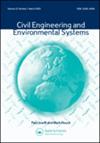Value-driven design approach for optimal long-span timber-concrete composite floor in multi-storey wooden residential buildings
IF 1.1
3区 工程技术
Q3 ENGINEERING, CIVIL
引用次数: 7
Abstract
ABSTRACT Long-span timber-concrete composite (TCC) floor systems have the potential to address the design challenges for conventional wooden floors in residential multi-storey timber frame buildings. The aim of this paper is to develop a design approach for long-span timber-concrete composite floor system of 6–9 m. A framework based on value-driven design approach has been developed for integration of results from graphical multi-objective optimisation, spreadsheet-based analysis, structural static and dynamic finite element analysis, and multi-criteria decision making. To verify the developed framework, a residential five-storey timber frame building as a case study has been studied. Optimal design includes optimised thickness of the concrete and optimised smeared stiffness of connectors for three different comfort classes A to C in descending order. TCC floor with span length 7.3 [m] belonging to comfort class A and TCC floor with span length 9.0 [m] belonging to comfort class C has been chosen as optimal solutions. The results indicate that proposed and innovative design approach is a promising tool for developers, architects and structural engineers when designing optimal long-span timber-concrete composite floor system.多层木结构住宅大跨度木混复合楼板优化设计方法
大跨度木材-混凝土复合材料(TCC)地板系统有可能解决住宅多层木结构建筑中传统木地板的设计挑战。本文的目的是为6-9米的大跨度木结构-混凝土组合楼盖体系提供一种设计方法。基于价值驱动设计方法的框架已经开发出来,用于集成图形多目标优化、基于电子表格的分析、结构静态和动态有限元分析以及多标准决策的结果。为了验证开发的框架,以一座五层木结构住宅为例进行了研究。优化设计包括优化混凝土厚度和优化连接器的涂抹刚度,以满足从A到C三个不同舒适等级的要求。选择跨度为7.3 [m]的舒适A级TCC楼面和跨度为9.0 [m]的舒适C级TCC楼面作为最优解。结果表明,本文提出的创新设计方法为开发商、建筑师和结构工程师设计最佳大跨度木混组合楼盖体系提供了一种有前景的工具。
本文章由计算机程序翻译,如有差异,请以英文原文为准。
求助全文
约1分钟内获得全文
求助全文
来源期刊

Civil Engineering and Environmental Systems
工程技术-工程:土木
CiteScore
3.30
自引率
16.70%
发文量
10
审稿时长
>12 weeks
期刊介绍:
Civil Engineering and Environmental Systems is devoted to the advancement of systems thinking and systems techniques throughout systems engineering, environmental engineering decision-making, and engineering management. We do this by publishing the practical applications and developments of "hard" and "soft" systems techniques and thinking.
Submissions that allow for better analysis of civil engineering and environmental systems might look at:
-Civil Engineering optimization
-Risk assessment in engineering
-Civil engineering decision analysis
-System identification in engineering
-Civil engineering numerical simulation
-Uncertainty modelling in engineering
-Qualitative modelling of complex engineering systems
 求助内容:
求助内容: 应助结果提醒方式:
应助结果提醒方式:


